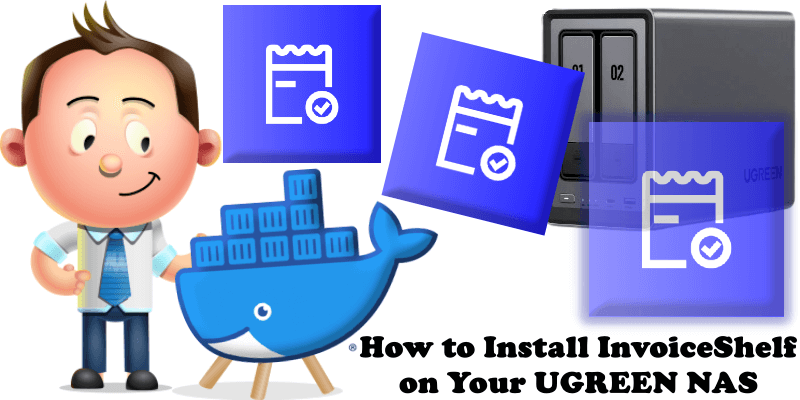
InvoiceShelf is an open-source web and mobile application designed to streamline invoicing and financial management for individuals and businesses. Built with Laravel, VueJS, and React Native, it offers a robust set of tools to track expenses, monitor payments, and create professional invoices and estimates. The app supports customization through extensions, allowing users to browse, install, and enhance functionality to suit their needs. In this step by step guide I will show you how to install InvoiceShelf on your UGREEN NAS using Docker & Portainer.
STEP 1
Please Support My work by Making a Donation.
STEP 2
Install Portainer using my step by step guide. If you already have Portainer installed on your UGREEN NAS, skip this STEP. Attention: Make sure you have installed the latest Portainer version.
STEP 3
⚠️Mandatory: Enable HTTPS on your UGREEN NAS.
STEP 4
Create a new hostname on the noip website using your noip account. For example, I have created mariusinvoice as Host and I use the free ddns.net domain. In the IP Address area, type in your own IPV4 IP address from your ISP, then click Create. Follow the instructions in the image below.
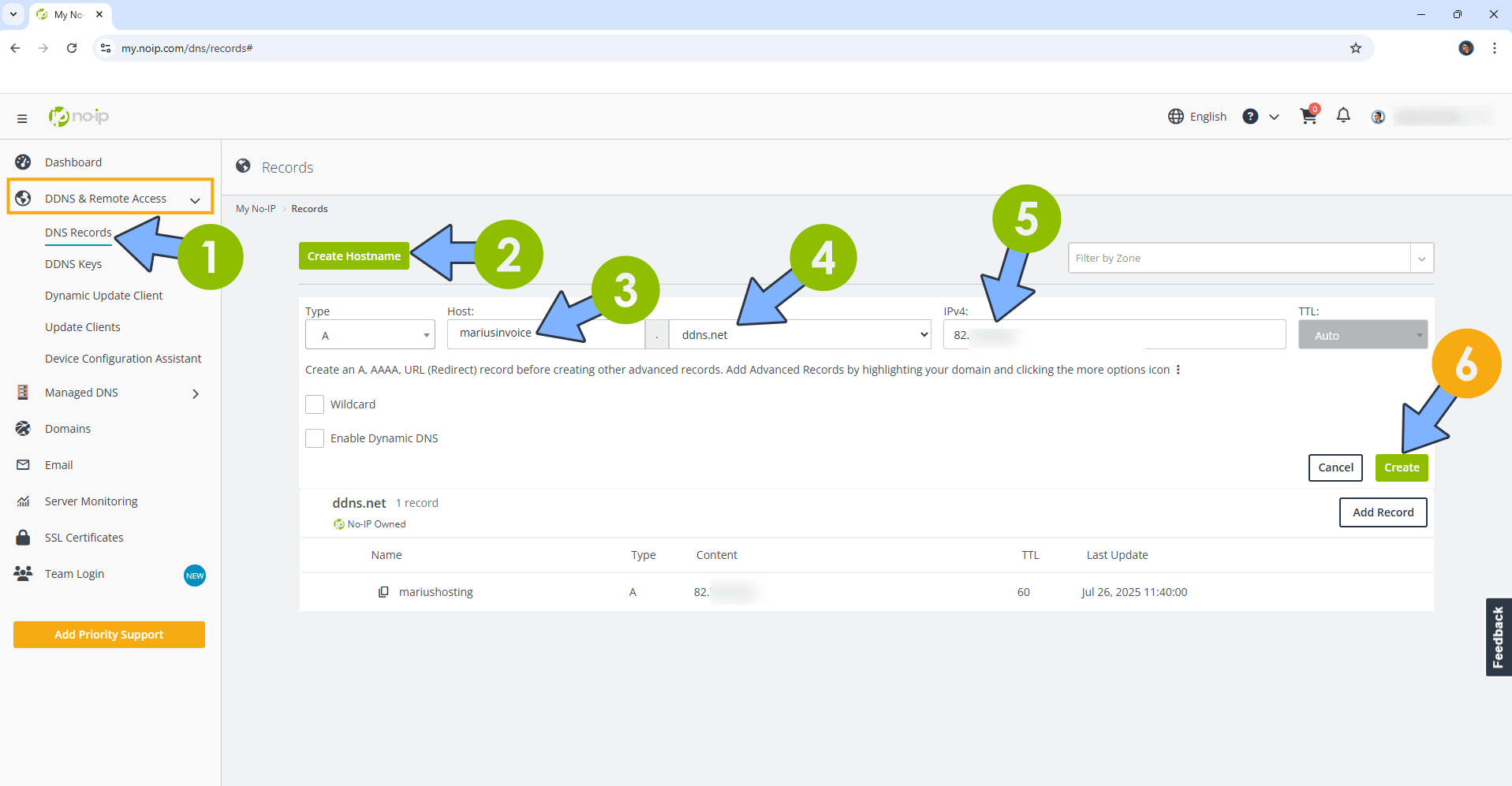
STEP 5
Go to Files and open the docker folder. Inside the docker folder, create one new folder and name it invoiceshelf. Follow the instructions in the image below.
Note: Be careful to enter only lowercase, not uppercase letters.

STEP 6
Now create three new folders inside the invoiceshelf folder that you have previously created at STEP 5 and name them conf, data, db. Follow the instructions in the image below.
Note: Be careful to enter only lowercase, not uppercase letters.
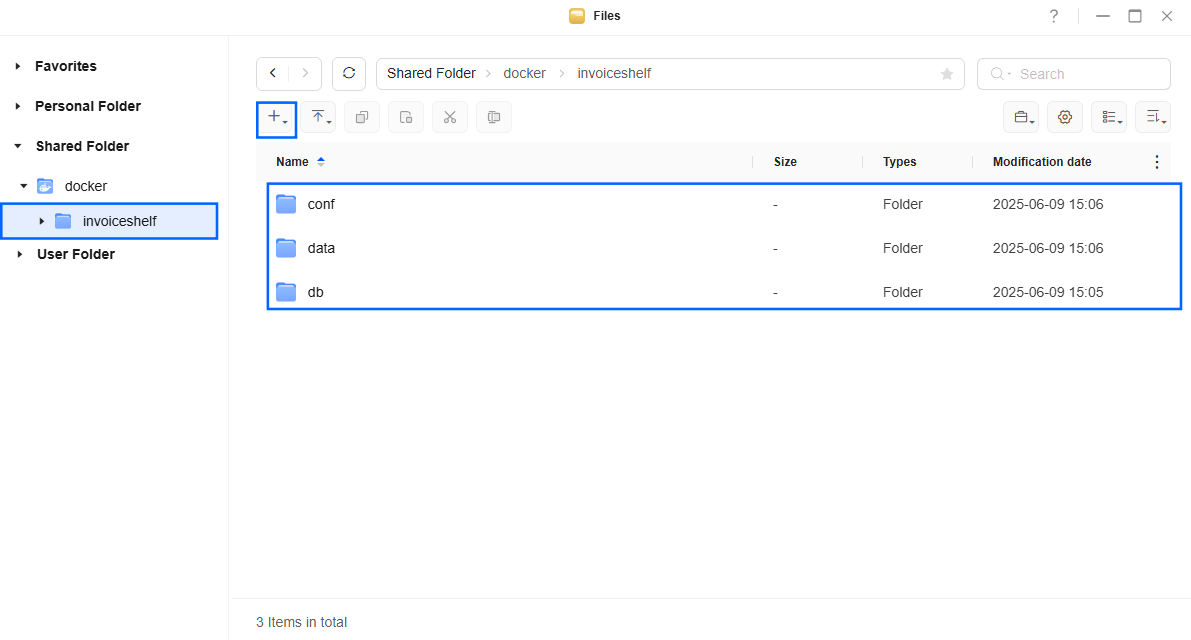
STEP 7
Log into Portainer using your username and password. On the left sidebar in Portainer, click on Home then Live connect. Follow the instructions in the image below.
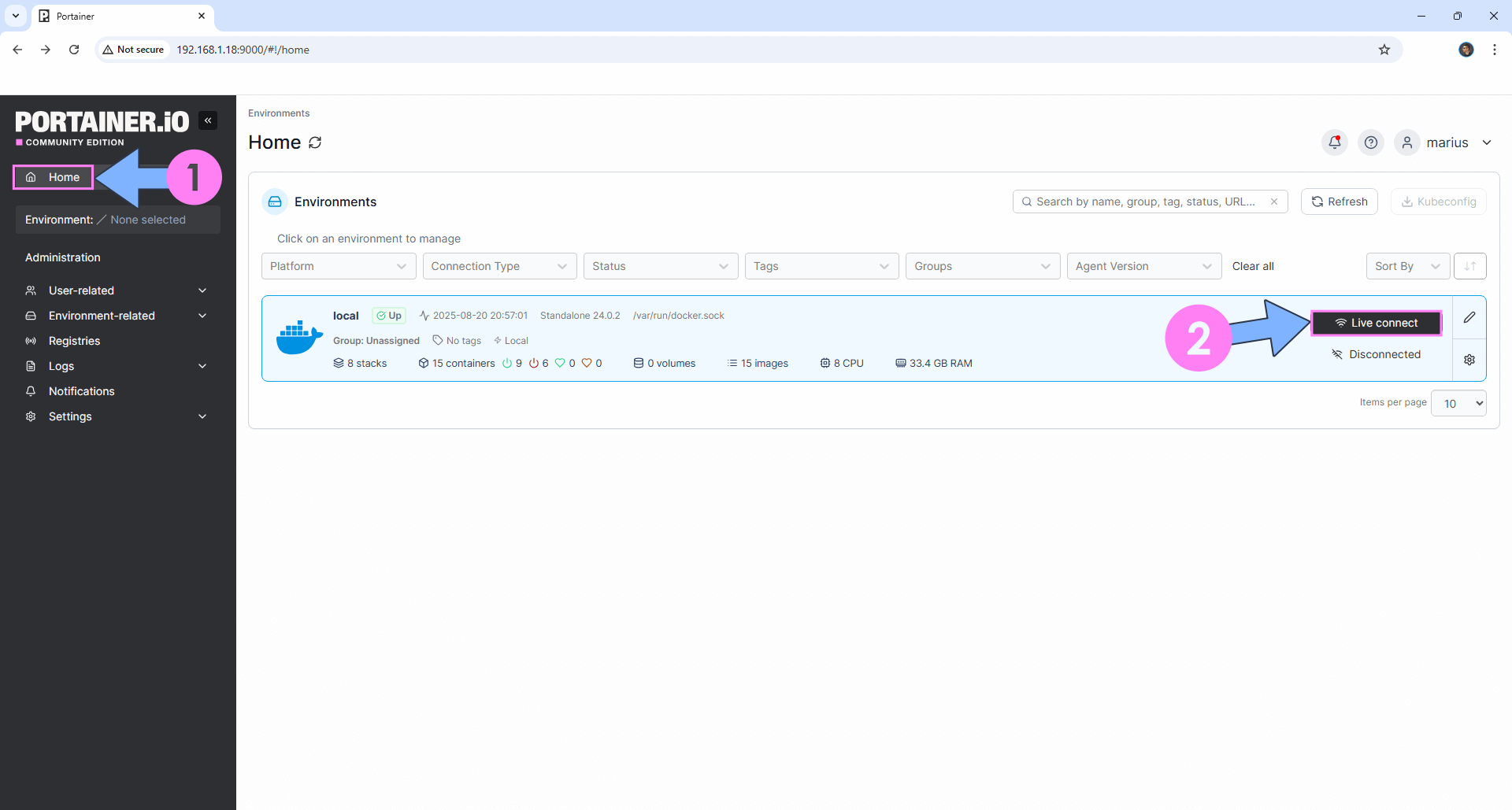
On the left sidebar in Portainer, click on Stacks then + Add stack. Follow the instructions in the image below.

STEP 8
In the Name field type in invoiceshelf. Follow the instructions in the image below.
services:
db:
image: postgres:17
container_name: InvoiceShelf-DB
hostname: invoiceshelf-db
security_opt:
- no-new-privileges:true
healthcheck:
test: ["CMD", "pg_isready", "-q", "-d", "invoiceshelf", "-U", "invoiceshelfuser"]
timeout: 45s
interval: 10s
retries: 10
volumes:
- /volume1/docker/invoiceshelf/db:/var/lib/postgresql/data:rw
environment:
POSTGRES_DB: invoiceshelf
POSTGRES_USER: invoiceshelfuser
POSTGRES_PASSWORD: invoiceshelfpass
restart: on-failure:5
invoiceshelf:
image: tompostler/invoiceshelf
container_name: InvoiceShelf
ports:
- 9053:80
volumes:
- /volume1/docker/invoiceshelf/data:/data:rw
- /volume1/docker/invoiceshelf/conf:/conf:rw
environment:
PHP_TZ: Europe/Bucharest
TIMEZONE: Europe/Bucharest
PUID: 999
PGID: 10
APP_NAME: Mariushosting
APP_KEY: base64:PqkYgeKqq3hdHZTvL6ENXdhgyyoCDZYj9wofOcw0l4o=
APP_ENV: local
APP_DEBUG: true
APP_URL: https://mariusinvoice.ddns.net
DB_CONNECTION: pgsql
DB_HOST: db
DB_PORT: 5432
DB_DATABASE: invoiceshelf
DB_USERNAME: invoiceshelfuser
DB_PASSWORD: invoiceshelfpass
DB_PASSWORD_FILE: rootpass
CACHE_STORE: file
SESSION_DRIVER: file
SESSION_LIFETIME: 240
SESSION_ENCRYPT: false
SESSION_PATH: /
SESSION_DOMAIN: mariusinvoice.ddns.net
SANCTUM_STATEFUL_DOMAINS: mariusinvoice.ddns.net
STARTUP_DELAY: 5
TRUSTED_PROXIES: "*"
restart: on-failure:5
depends_on:
- db
Note: Before you paste the code above in the Web editor area below, change the value for TZ. (Select your current Time Zone from this list.)
Note: Before you paste the code above in the Web editor area below, change the value numbers for PUID and PGID with your own values. (Follow my step by step guide on how to do this.)
Note: Before you paste the code above in the Web editor area below, change the value for APP_NAME. Mariushosting is an example for an APP NAME.
Note: Before you paste the code above in the Web editor area below, change the value for APP_KEY. (Generate your own free APP KEY.)
Note: Before you paste the code above in the Web editor area below, change the value for APP_URL and type in your own no IP DDNS with https:// at the beginning that you have previously created at STEP 4.
Note: Before you paste the code above in the Web editor area below, change the value for SESSION_DOMAIN and type in your own no IP DDNS without https:// at the beginning that you have previously created at STEP 4.
Note: Before you paste the code above in the Web editor area below, change the value for SANCTUM_STATEFUL_DOMAINS and type in your own no IP DDNS without https:// at the beginning that you have previously created at STEP 4.
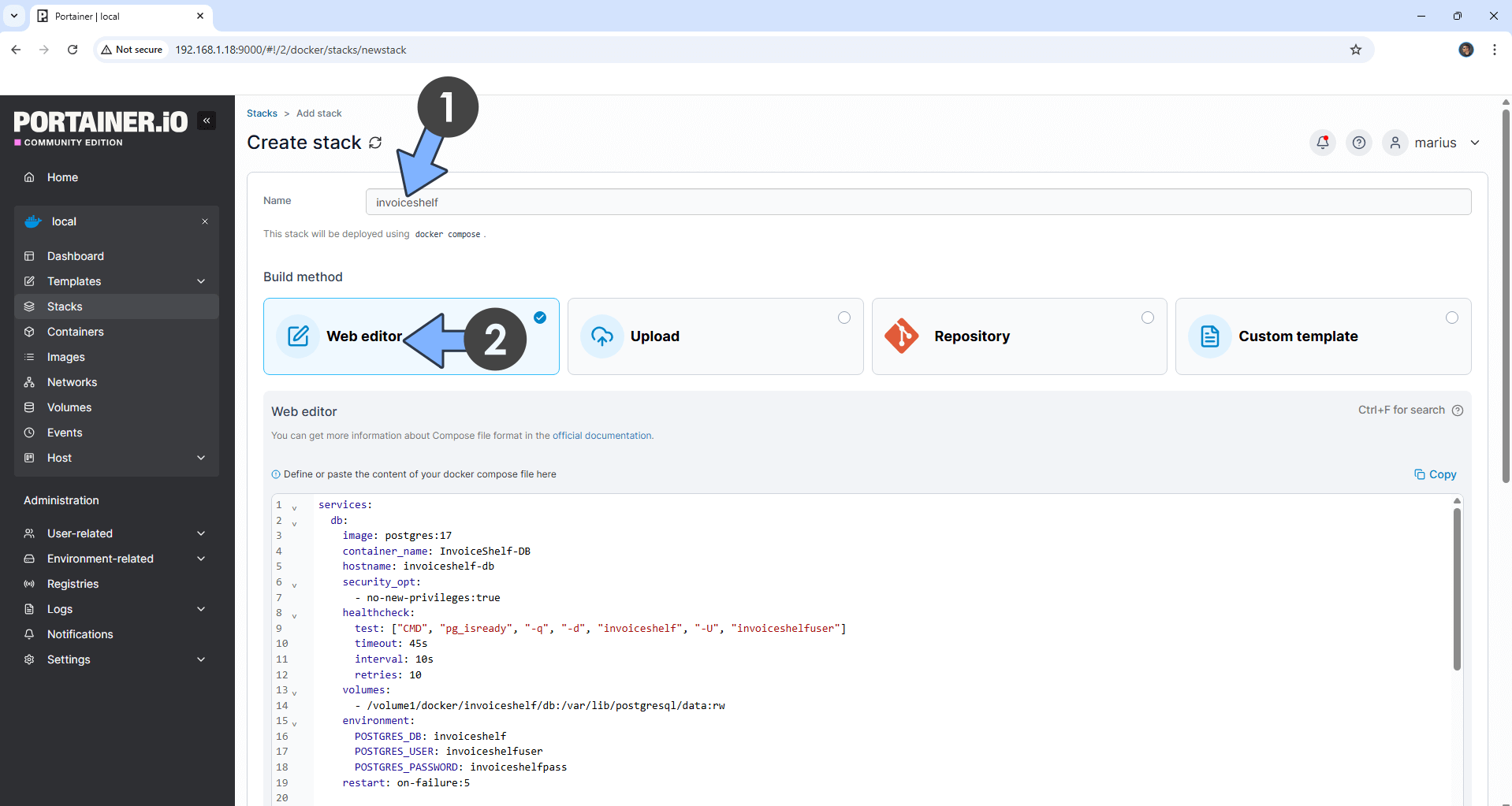
STEP 9
Scroll down on the page until you see a button named Deploy the stack. Click on it. Follow the instructions in the image below. The installation process can take up to a few minutes. It will depend on your Internet speed connection.
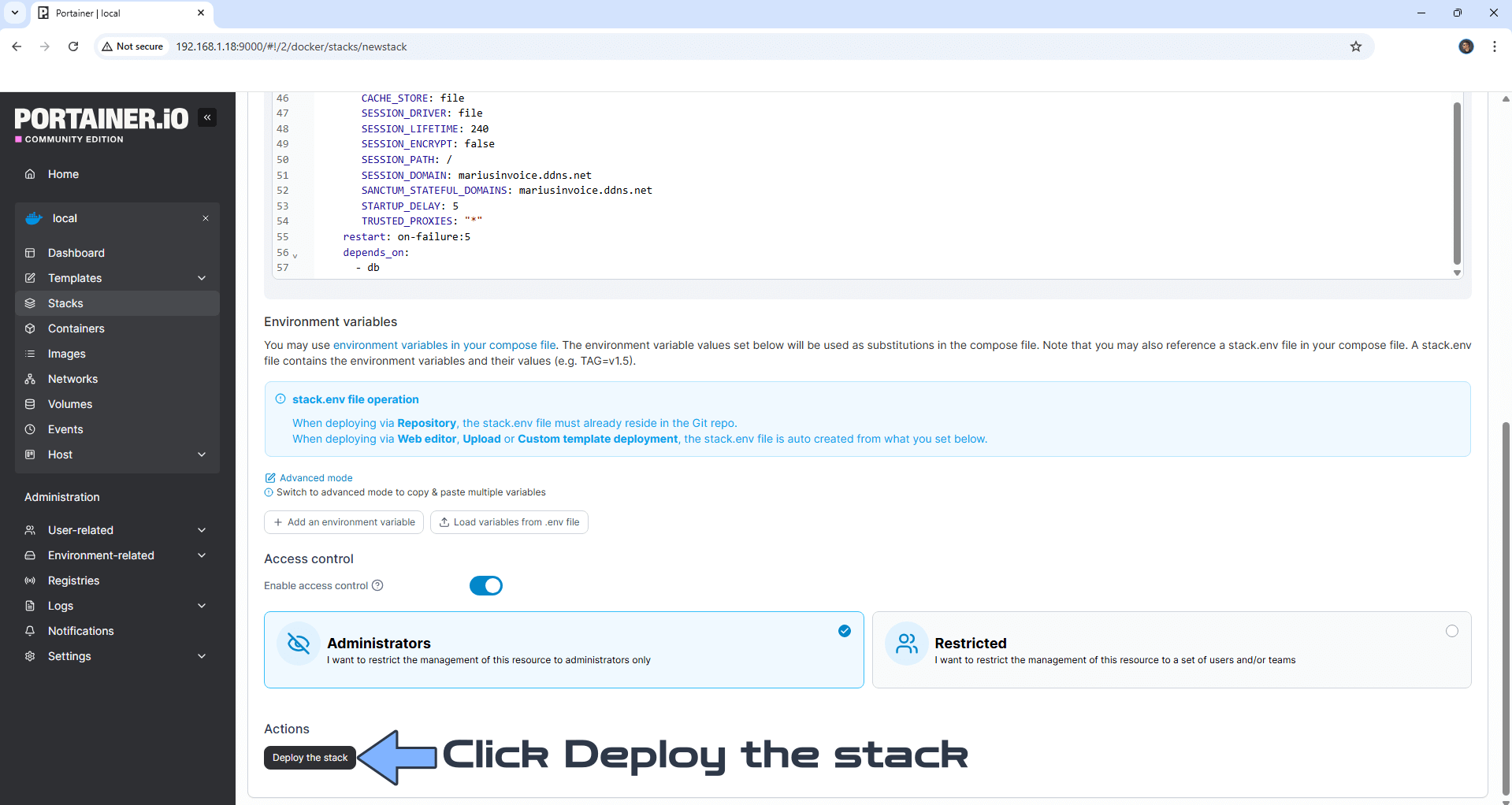
STEP 10
If everything goes right, you will see the following message at the top right of your screen: “Success Stack successfully deployed“.
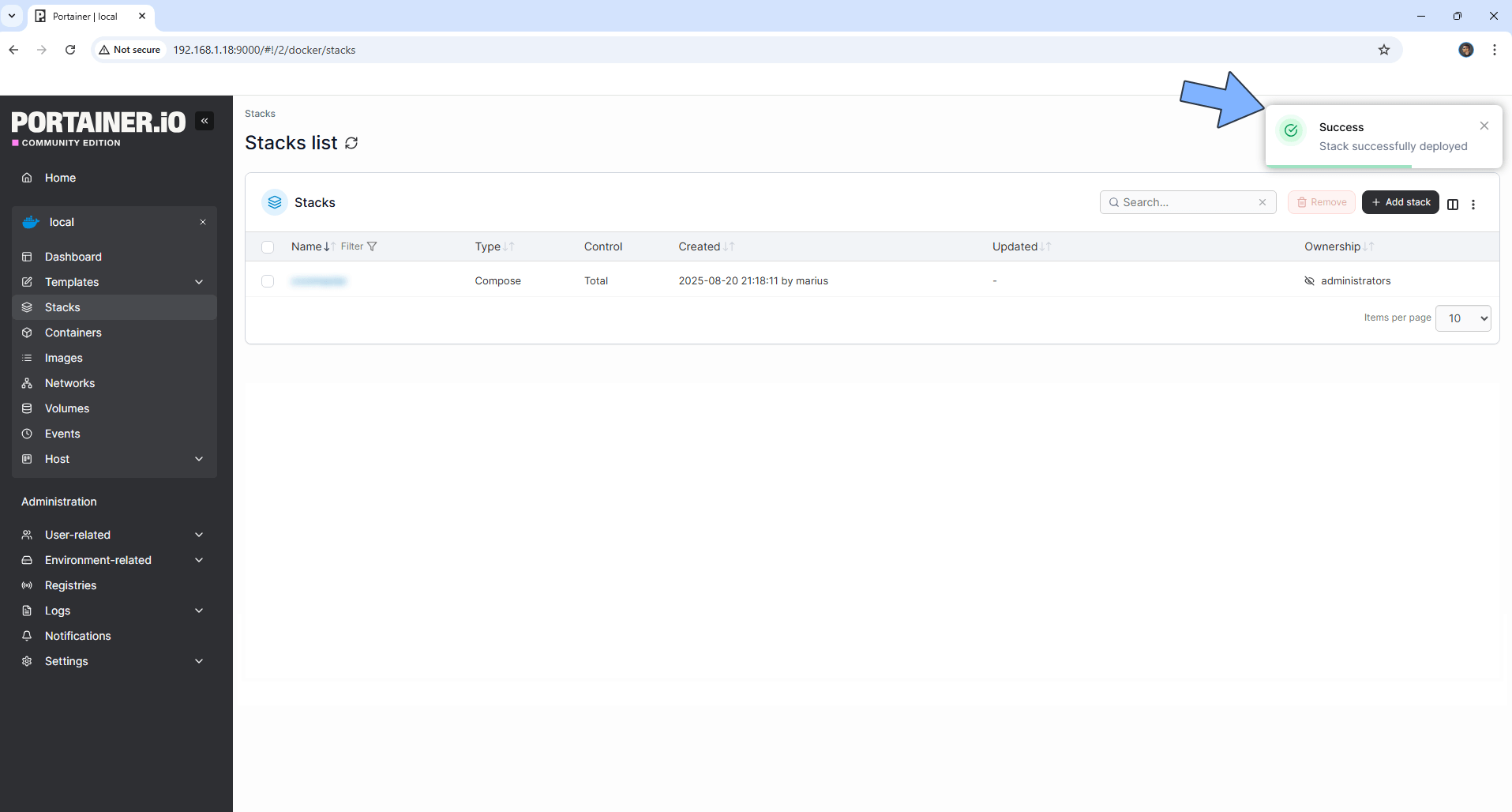
STEP 11
Open your Nginx Proxy Manager container that you have previously installed at STEP 3. Click Add Proxy Host. A new pop up window will open. Add the following details:
Domain Names: Type in your own noip domain name that you have previously created at STEP 4.
Scheme: http
Forward Hostname/IP: Type in the local NAS IP of your UGREEN NAS.
Forward Port: Type in the InvoiceShelf local Port that is 9053
Check Block Common Exploits
Check Websockets Support
Click the SSL tab. Follow the instructions in the image below.

STEP 12
After you click the SSL tab, add the following details:
SSL Certificate: Request a new SSL Certificate
Check: Force SSL
Check: HSTS Enabled
Check: HTTP/2 Support
Click Save. Follow the instructions in the image below.
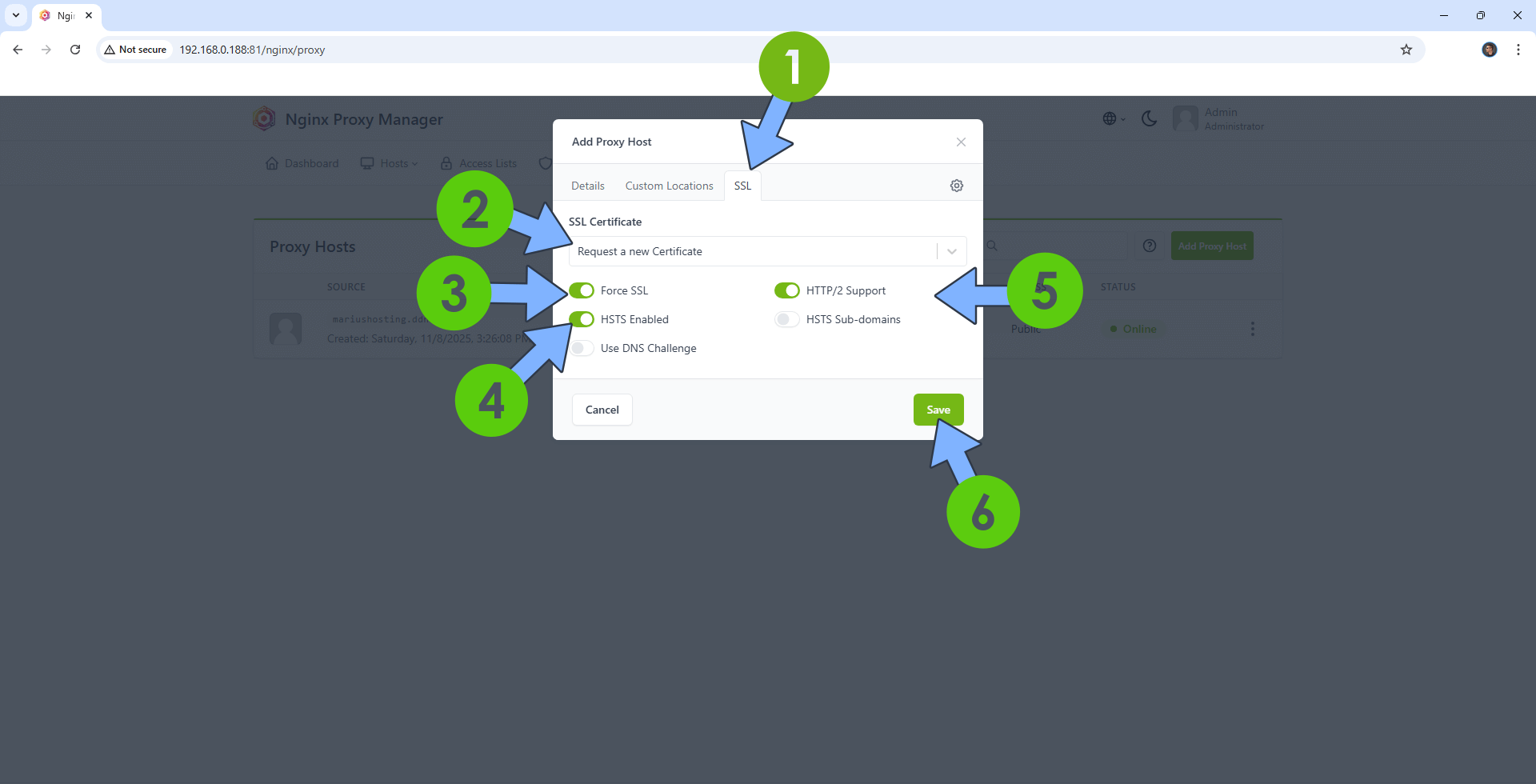
STEP 13
In the Proxy Hosts area, if everything goes right, you will see that your invoiceshelf hostname has been generated. Click on it. Follow the instructions in the image below.
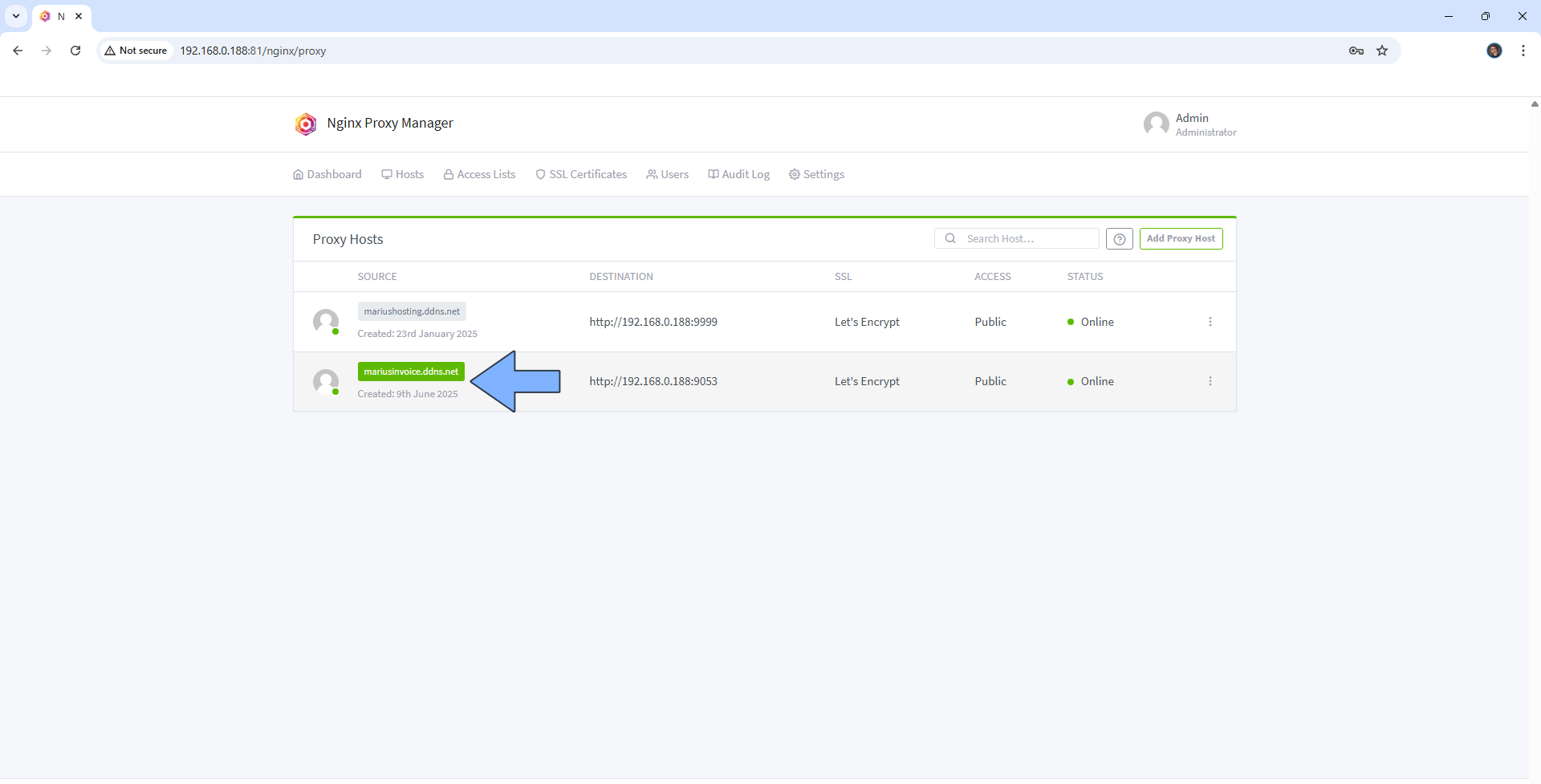
STEP 14
Now open your browser and type in https://yourname.ddns.net In my case https://mariusinvoice.ddns.net If everything goes right, you will see the InvoiceShelf installation page. Select your language, then click Continue. Follow the instructions in the image below.
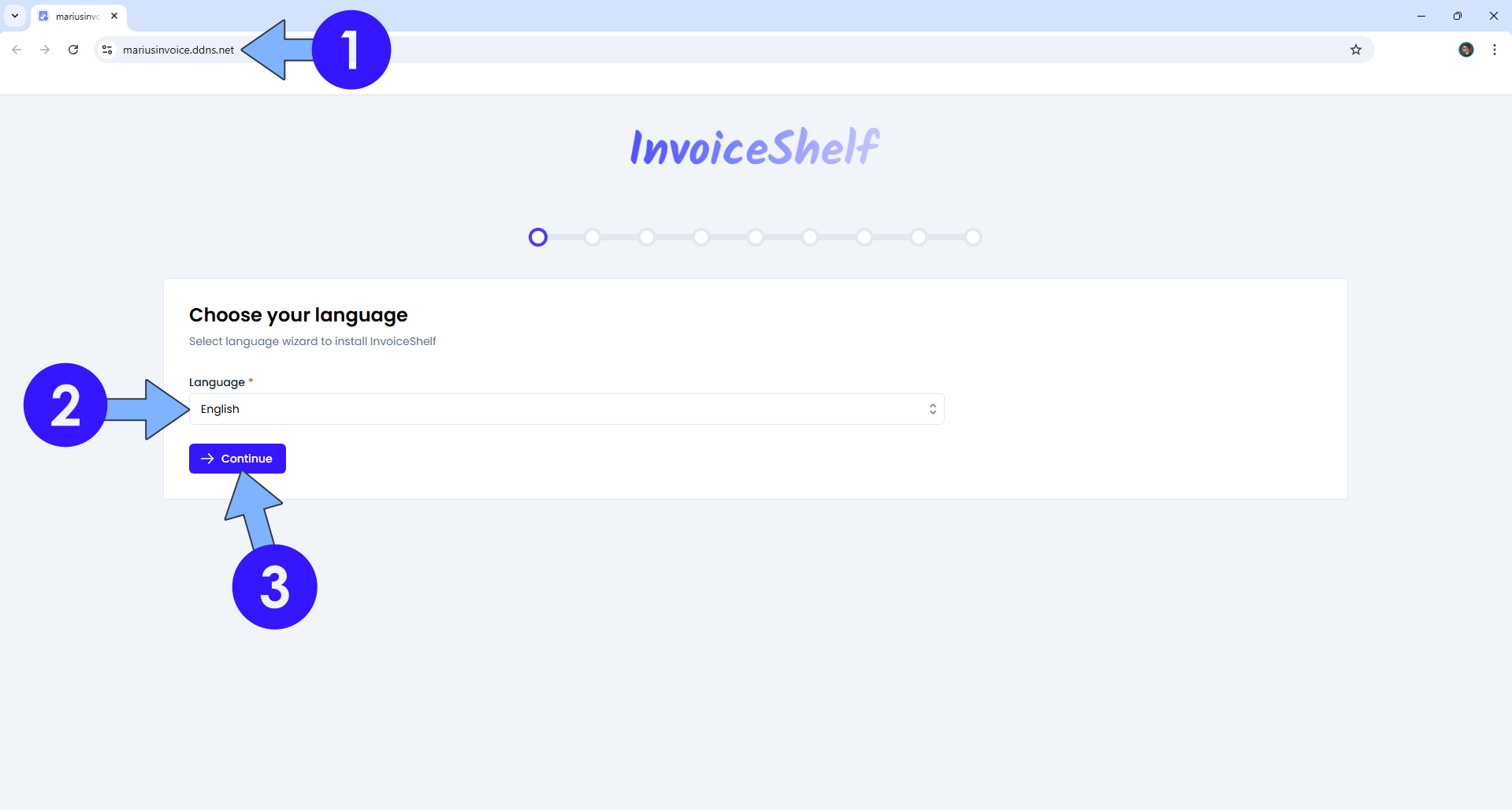
STEP 15
Click Check Requirements then Continue. Follow the instructions in the image below.
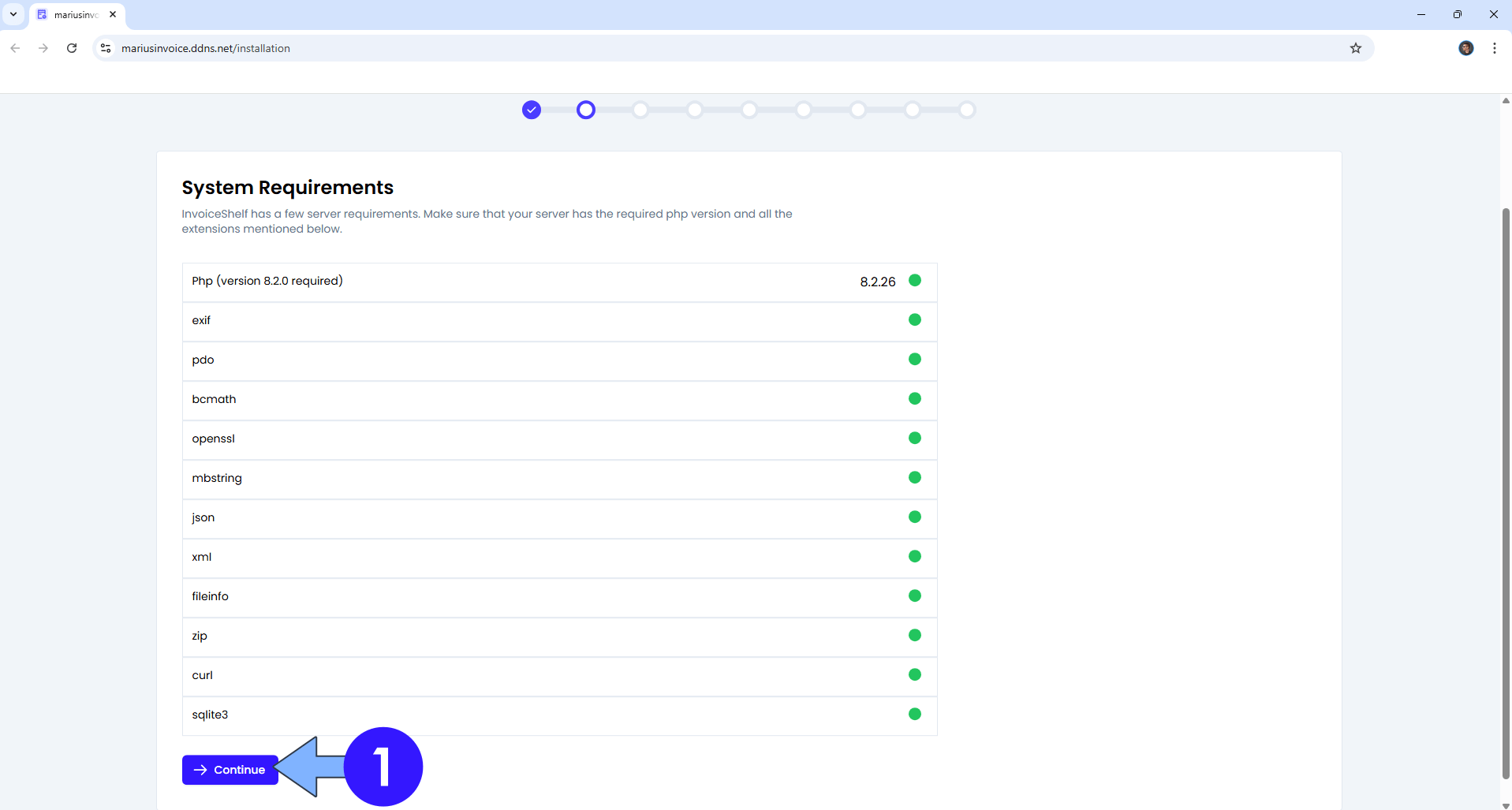
STEP 16
Click Continue. Follow the instructions in the image below.
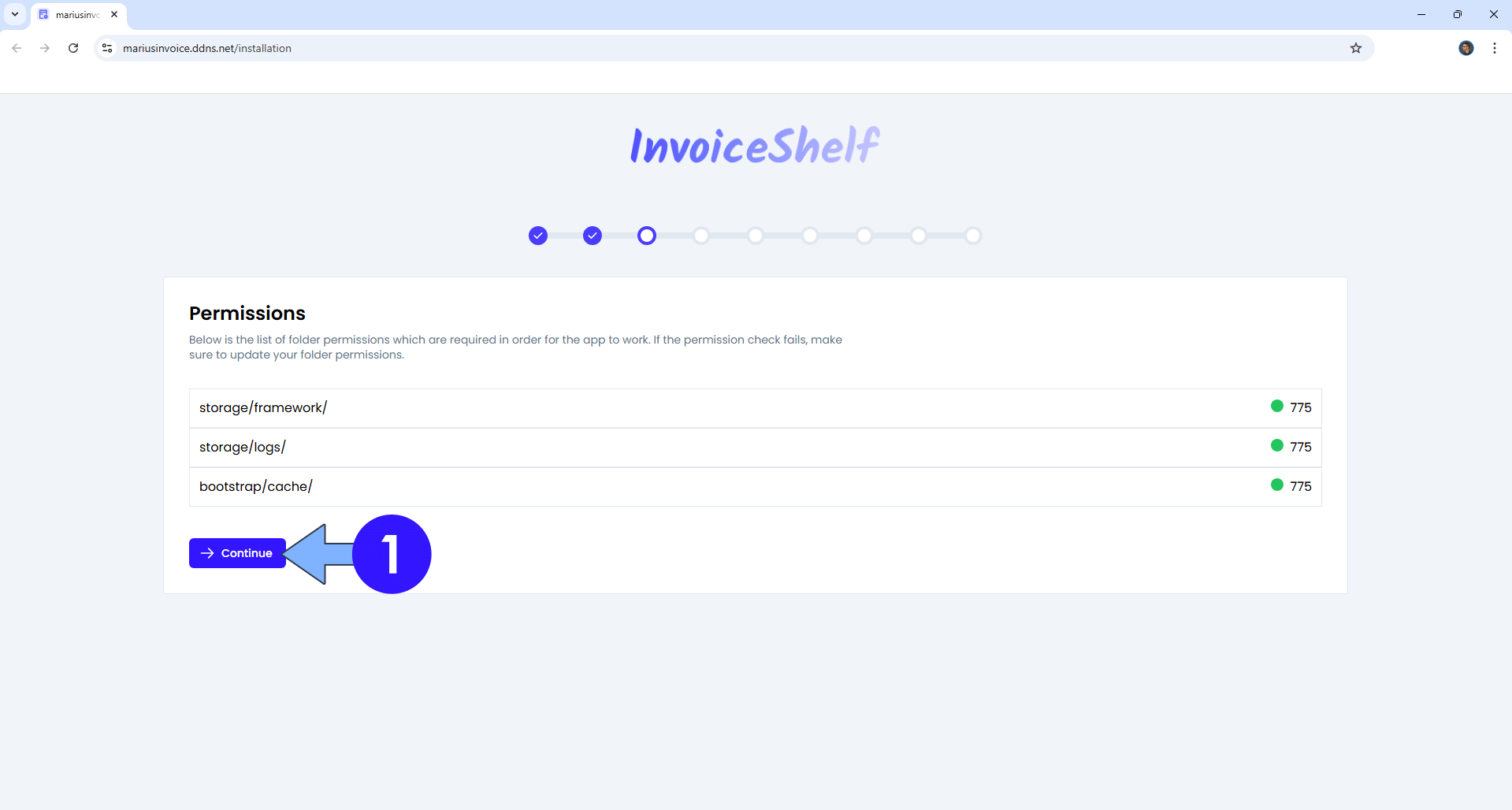
STEP 17
Type in your own database connection details. Follow the instructions below.
- App URL: Type in your own no ip DDNS with https:// at the beginning.
- Database Connection: pgsql
- Database Port: 5432
- Database Name: invoiceshelf
- Database Username: invoiceshelfuser
- Database Password: invoiceshelfpass
- Database Host: db
Check Overwrite existing database and proceed, then click Save & Continue. Follow the instructions in the image below.

STEP 18
In the App Domain field, type in your no IP DDNS without https:// at the beginning. Click Verify Now. Follow the instructions in the image below.

STEP 19
Follow my step by step guide on how to activate SMTP for your Gmail account. This step is mandatory. Note: If you don’t want to use the easiest way for SMTP with Google and you already have SMTP details from your own Mail Server, you can just skip this STEP and use your personalized email SMTP details instead.
STEP 20
Configure your email using Gmail SMTP details. Follow the instructions below.
- Mail Driver: smtp
- Mail Host: smtp.gmail.com
- Mail Username: type in your own Gmail address. STEP 19.
- Mail Password: type in your own Gmail app password. STEP 19.
- Mail Port: 587
- Mail Encryption: starttls
- From Mail Address: type in your own Gmail address. STEP 19.
- From Mail Name: Your company name.
Click Save. Follow the instructions in the image below.

STEP 21
Add your own Account Information then click Save & Continue. Follow the instructions in the image below.
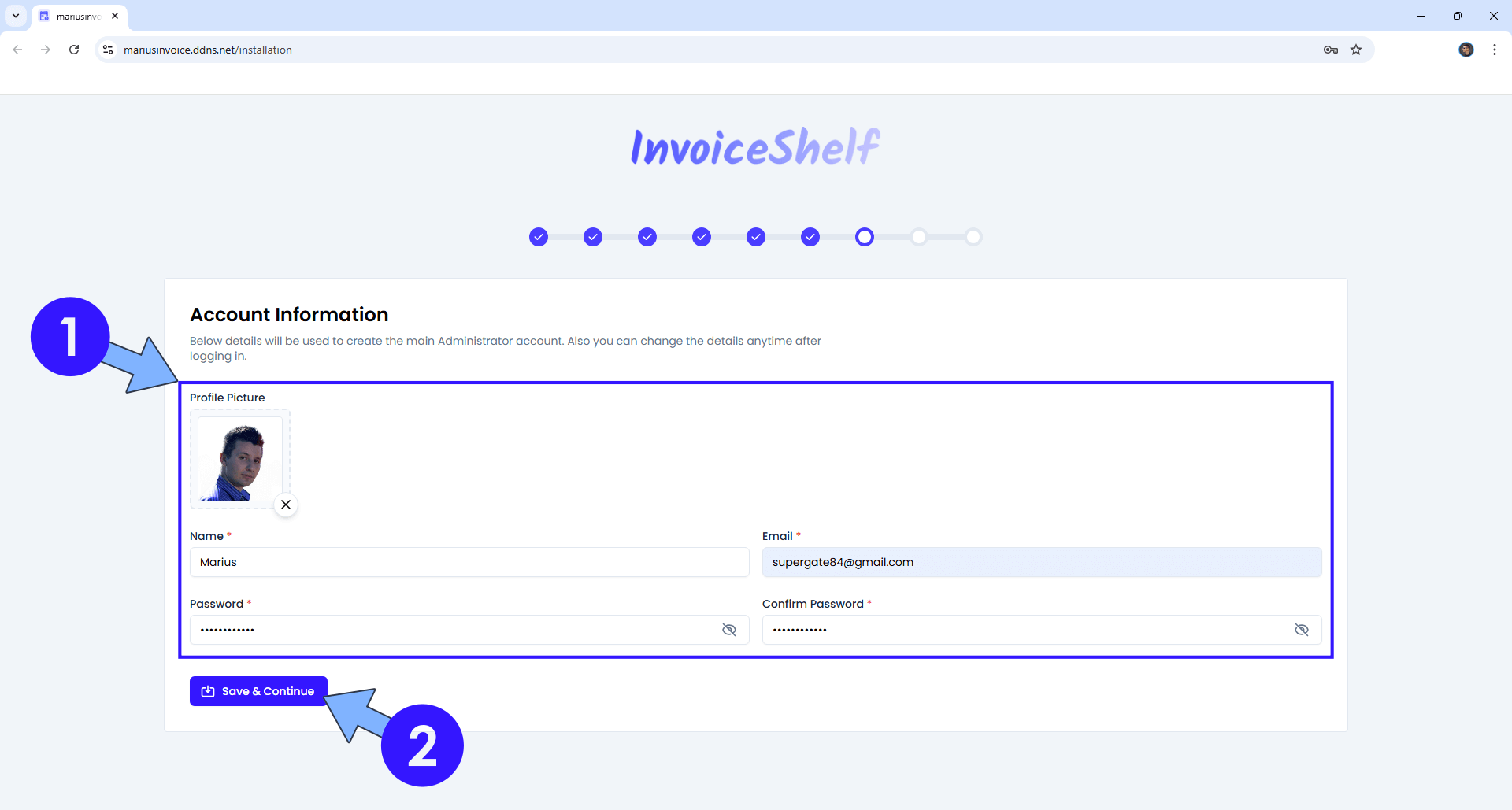
STEP 22
Add your own Company Information then click Save & Continue. Follow the instructions in the image below.
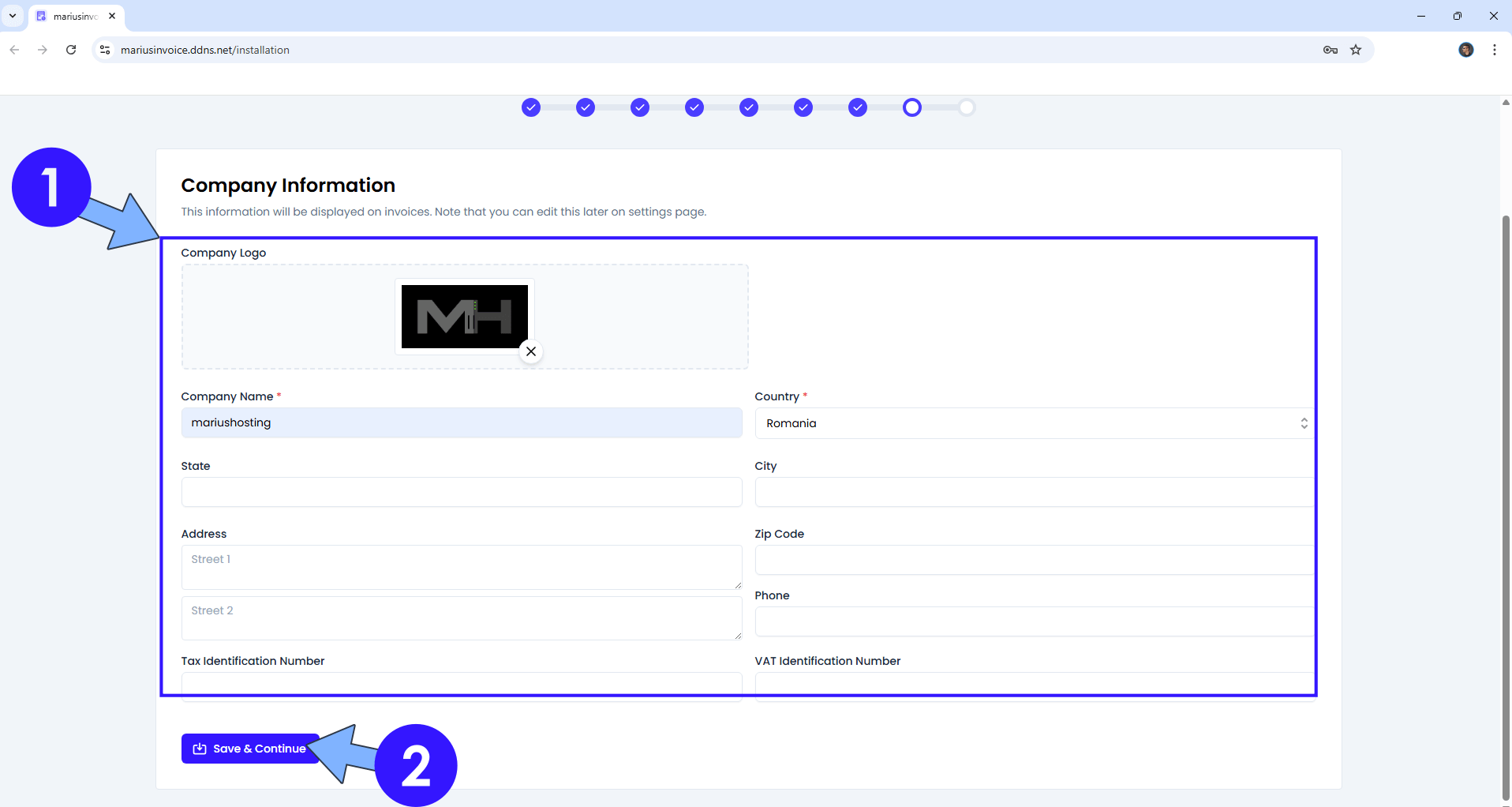
STEP 23
Add your own Company Preferences then click Save & Continue. Follow the instructions in the image below.

STEP 24
A new pop up window will open. Click Ok. Follow the instructions in the image below.
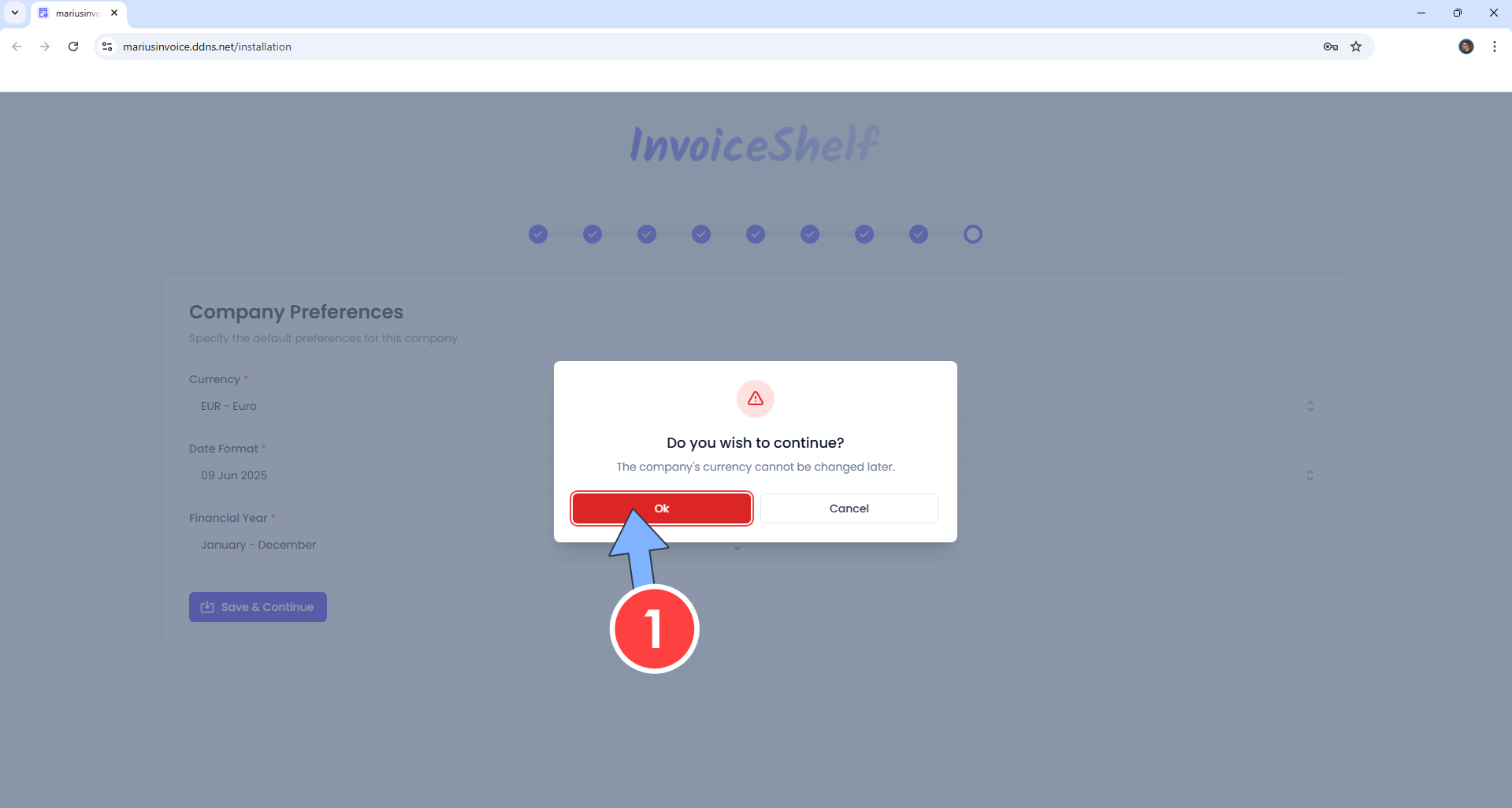
STEP 25
Your InvoiceShelf at a glance!

Create your first invoice.
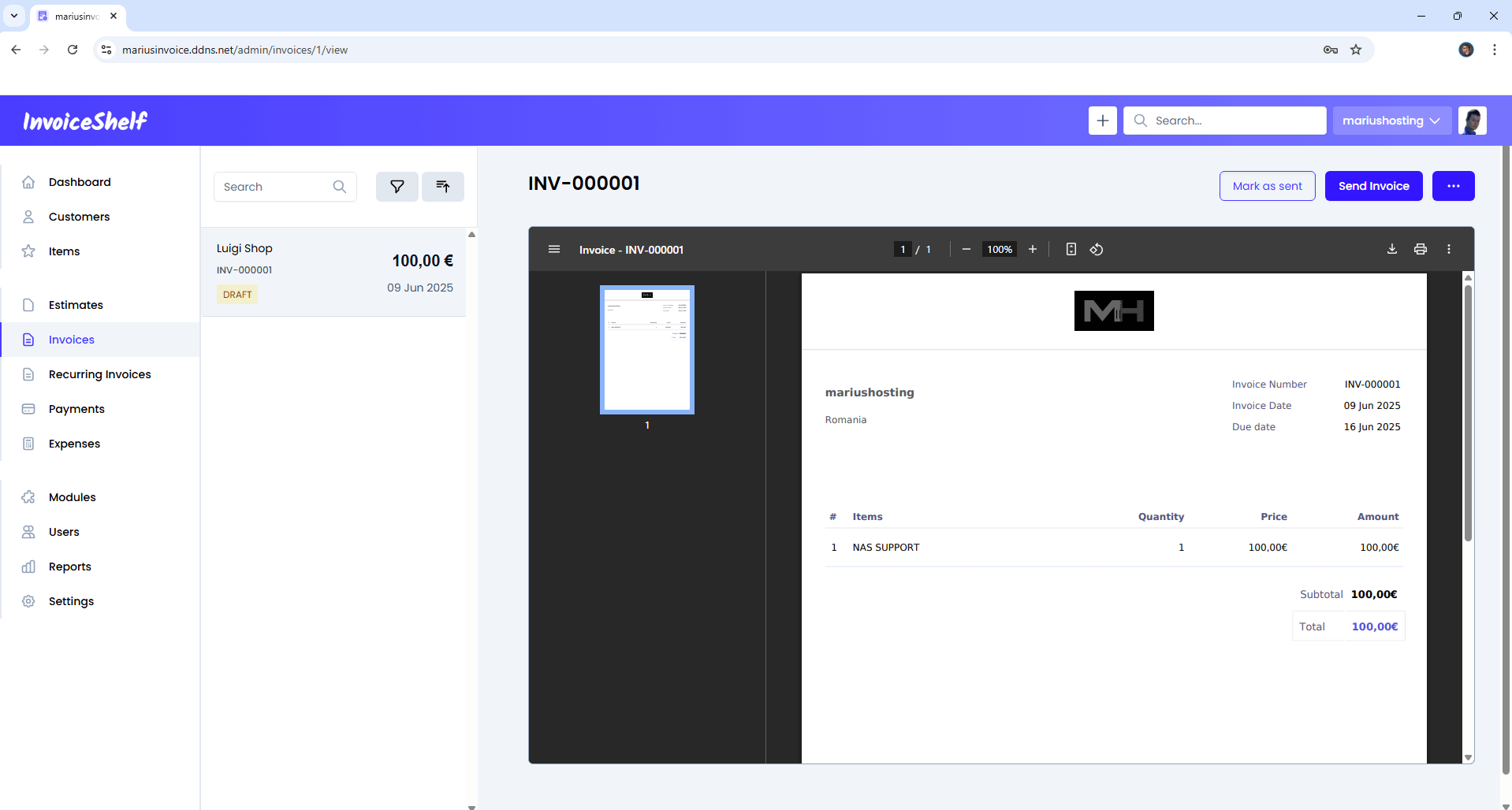
Enjoy InvoiceShelf on your UGREEEN NAS!
🆙Note/Update/Container: How to Update Your Docker Containers on UGREEN NAS Using Portainer.
🐳Note: How to Create Docker Shortcuts on Desktop.
🆕Note: How to Update Portainer to the latest version.
🆕Note: How to Clean Docker.
This post was updated on Saturday / December 6th, 2025 at 3:49 AM
